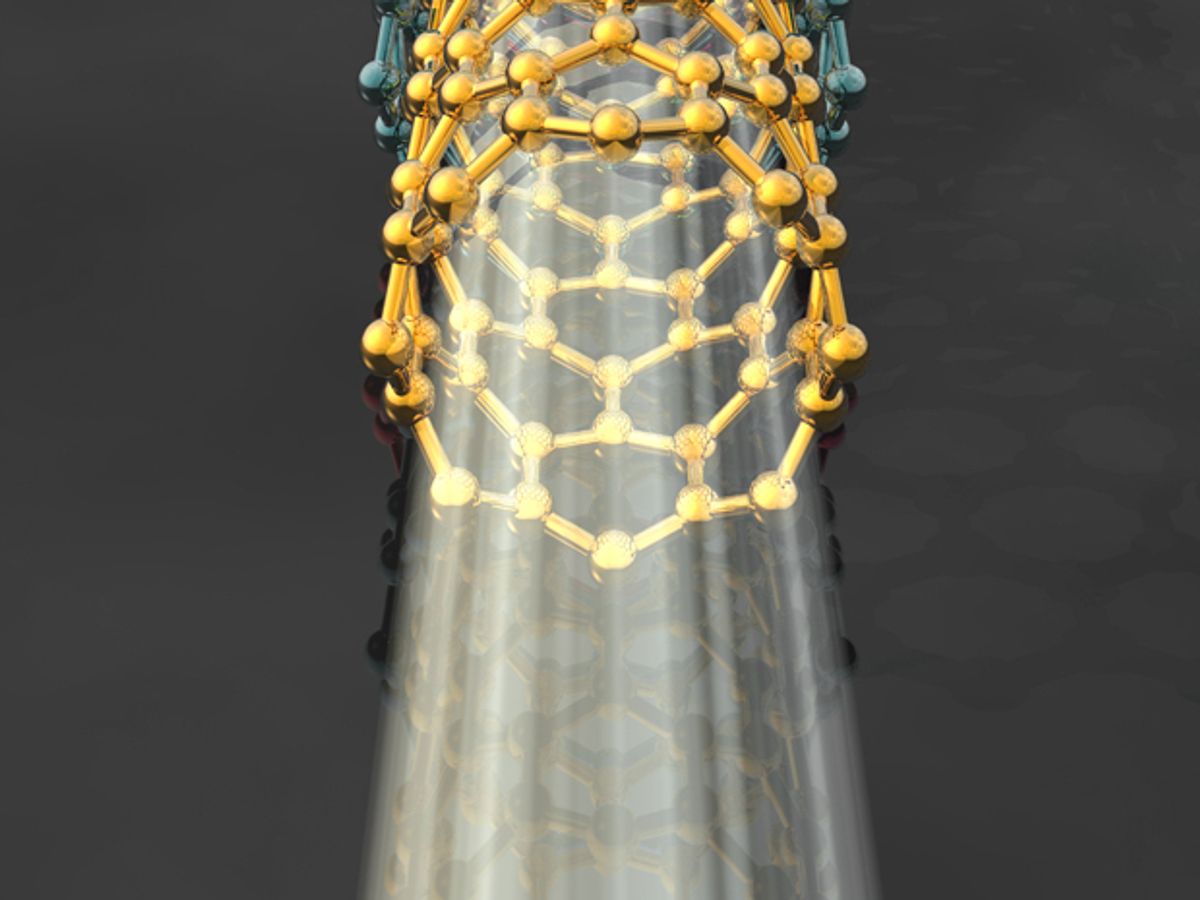Engineers trying to speed up communication between computer chips have been working on using beams of light to replace the copper traces that shuttle data between microprocessors. Now a pair of researchers at Northeastern University in Boston think they can turn up the speed even more by doing some of the computing with light as well.
Physicist Swastik Kar and mechanical engineer Yung Joon Jung lay belts of carbon nanotubes on top of a silicon wafer. The junction created by the intersection of the two materials proved to be highly sensitive to light; shining a laser spot on it caused a sharp rise in the light-induced current. That allowed the pair to build logic circuits that could be manipulated both electrically and optically.
“What we’ve done is built a tiny device where one input can be a voltage and the other input can be light,” Kar says.
The researchers built an optoelectronic AND gate and a two-bit optoelectronic ADDER/OR gate. They also built a four-bit digital-to-analog converter. Shining spots of light onto an array of these junctions converts the digital signal of the laser into an analog current, with the strength of the current depending on the on/off pattern of the laser.
Jung creates the nanotubes in solution, and they can then be placed on a patterned silicon/silicon oxide substrate, so the technology should be compatible with existing CMOS processes, he says. The process should also be reproducible and scalable to large numbers of junctions.
Using light to both move data around a chip and perform some of the logic operations should save time and make the chip work faster, according to the pair. Just how much faster they can’t say yet, as this is only an early step toward an actual chip.
A paper describing the work was published online in the journal Nature Photonics.
Image: Getty Images
Neil Savage is a freelance science and technology writer based in Lowell, Mass., and a frequent contributor to IEEE Spectrum. His topics of interest include photonics, physics, computing, materials science, and semiconductors. His most recent article, “Tiny Satellites Could Distribute Quantum Keys,” describes an experiment in which cryptographic keys were distributed from satellites released from the International Space Station. He serves on the steering committee of New England Science Writers.



